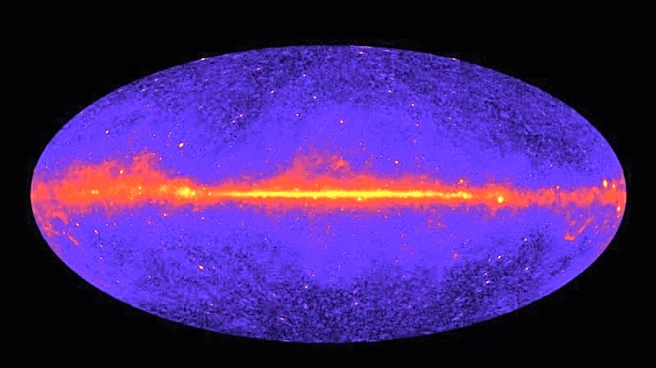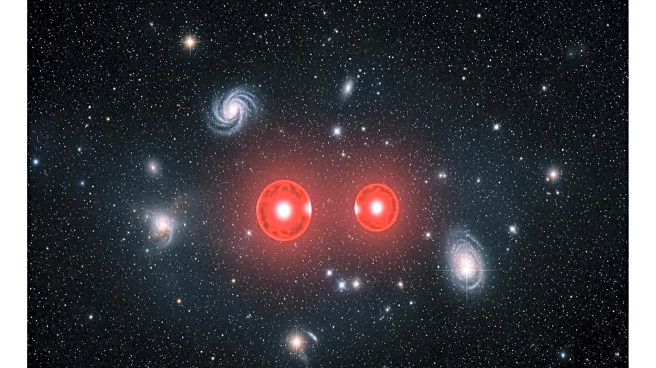What's Happening?
Researchers are nearing confirmation of dark matter's existence by studying a diffuse gamma-ray glow near the center of our galaxy. Dark matter, which constitutes over a quarter of the universe, remains
elusive due to its inability to absorb, reflect, or emit light. Scientists rely on its gravitational effects to infer its presence. The study of gamma rays offers a new avenue for understanding this mysterious substance, potentially leading to breakthroughs in cosmology.
Why It's Important?
Confirming the existence of dark matter would be a monumental achievement in physics, providing insights into the fundamental composition of the universe. It could lead to advancements in understanding cosmic structures and the forces that govern them. The research has implications for theoretical physics, potentially validating or challenging existing models of the universe. Success in this area could open new research pathways and technological developments in particle physics and cosmology.
What's Next?
Continued observations and analysis of gamma-ray data are expected as scientists work to confirm their findings. The research community will likely focus on refining detection methods and exploring the implications of dark matter on cosmic evolution. Collaboration across international scientific institutions will be crucial in advancing this field of study.
Beyond the Headlines
The pursuit of dark matter confirmation highlights the intersection of theoretical physics and observational astronomy. It underscores the importance of innovative approaches in tackling longstanding scientific mysteries and the potential for transformative discoveries in our understanding of the universe.












